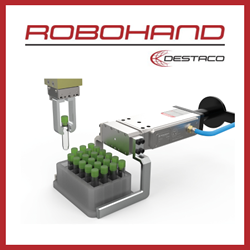Initial Industrial Robot Safety
Integrating industrial robot systems into your workplace requires managers and workers learn safety concerning these robots. Ensure worker and robot safety with initial safety precautions.
Accurate, industrious and trustworthy robots are incredibly valuable workers. But they are also capable of damaging equipment and harming workers. Safeguarding is a must for companies looking to save money, safety and lives.
Emphasis On Safety
Safety features have become increasingly important as industries begin to use automated robots.
•Avoid Accidents: Worker safety is supreme over all other things. Companies work to keep industrial accidents to the smallest amount with safety devices.
•New Standards: As companies expand globally, the strict European safety codes are beginning to have more relevance and application in North America.
•Save Money: Companies try to avoid litigation from accidents. Safety can eradicate court costs.
Implementing Safety Standards
Most companies in the United States stick to the ANSI/RIA R15.06-1999 safety standards. While these standards are not required legally, OSHA does prefer it when dealing with robots. The ANSI/RIA safety standards offer specific safety criteria about what devices and measurements to put into practice for each robot design.
Accidents May Happen
The extent to which safety standards are followed varies from company to company. Robot distributors and integrators stick to certain safety standards when creating work cells. But many companies create an additional safety environment around each cell. Devices such as safety relays, curtains and mats protect both workers and equipment.
Protect the Robot Investment
When a company starts to automate its production line, it will realize robots are costly investments, and it is in the best interest of every company to protect equipment as well as workers. Vision systems work like eyes to defend and notify the robot - this will help in identifying and avoiding dangers. These devices can be set to react to unusual situations or foreign objects. Some software-based systems, such as Omron's F210 series are programmed to respond to certain situations with specific reactions. The Cognex CPS-1000 People Sensor uses stereovision to recognize people and objects and take the right action.
Featured Product

DESTACO - Revolutionizing Industrial Automation
Looking for a reliable solution to enhance your automation process? Look no further than the DESTACO Robohand Grippers. These grippers are designed for the modern world of robotics, offering unparalleled performance and precision. Whether you need to grip fragile items, irregularly shaped objects, or heavy-duty components, the DESTACO Robohand Grippers have got you covered. Their modular design allows for quick and easy customization, ensuring a perfect fit for your application.
